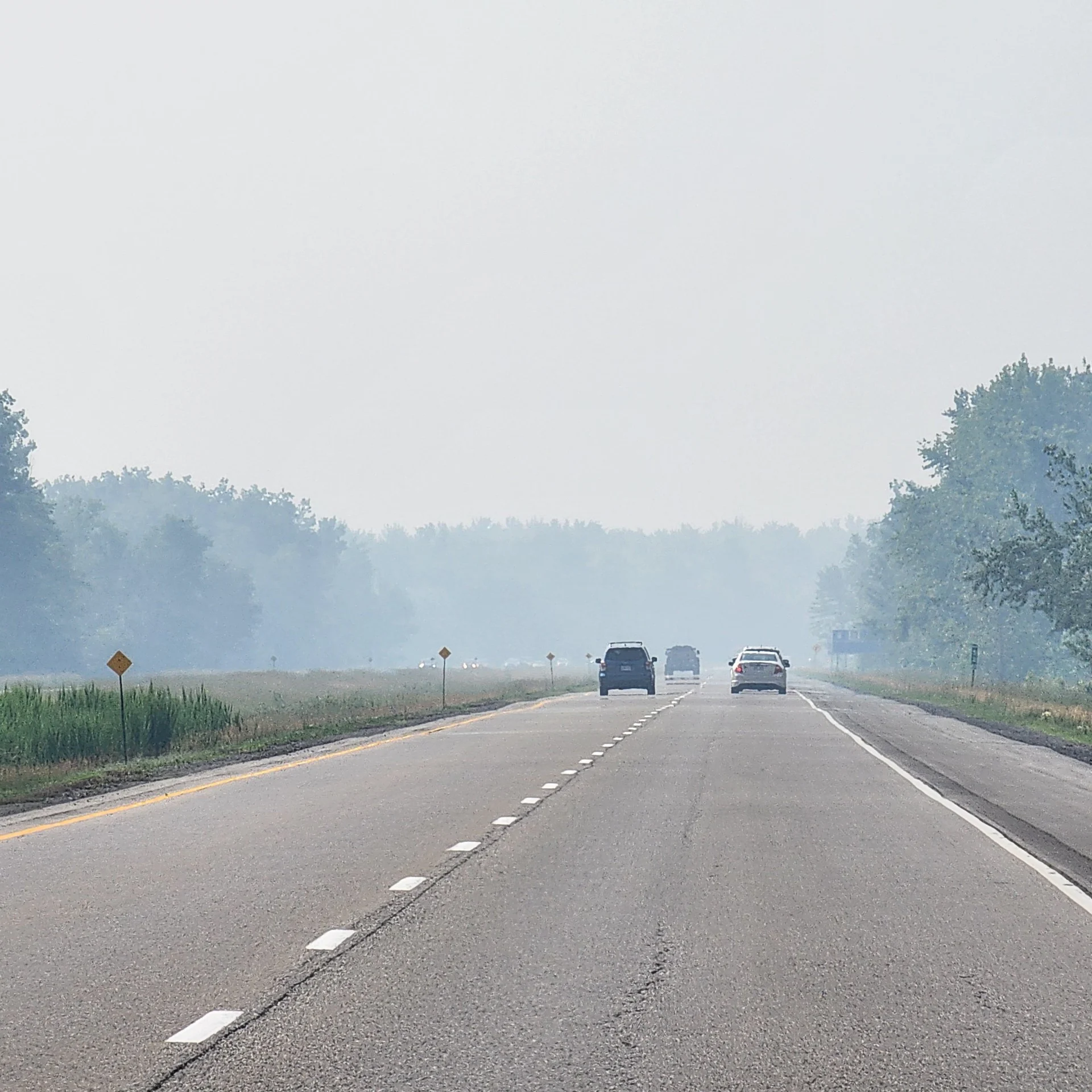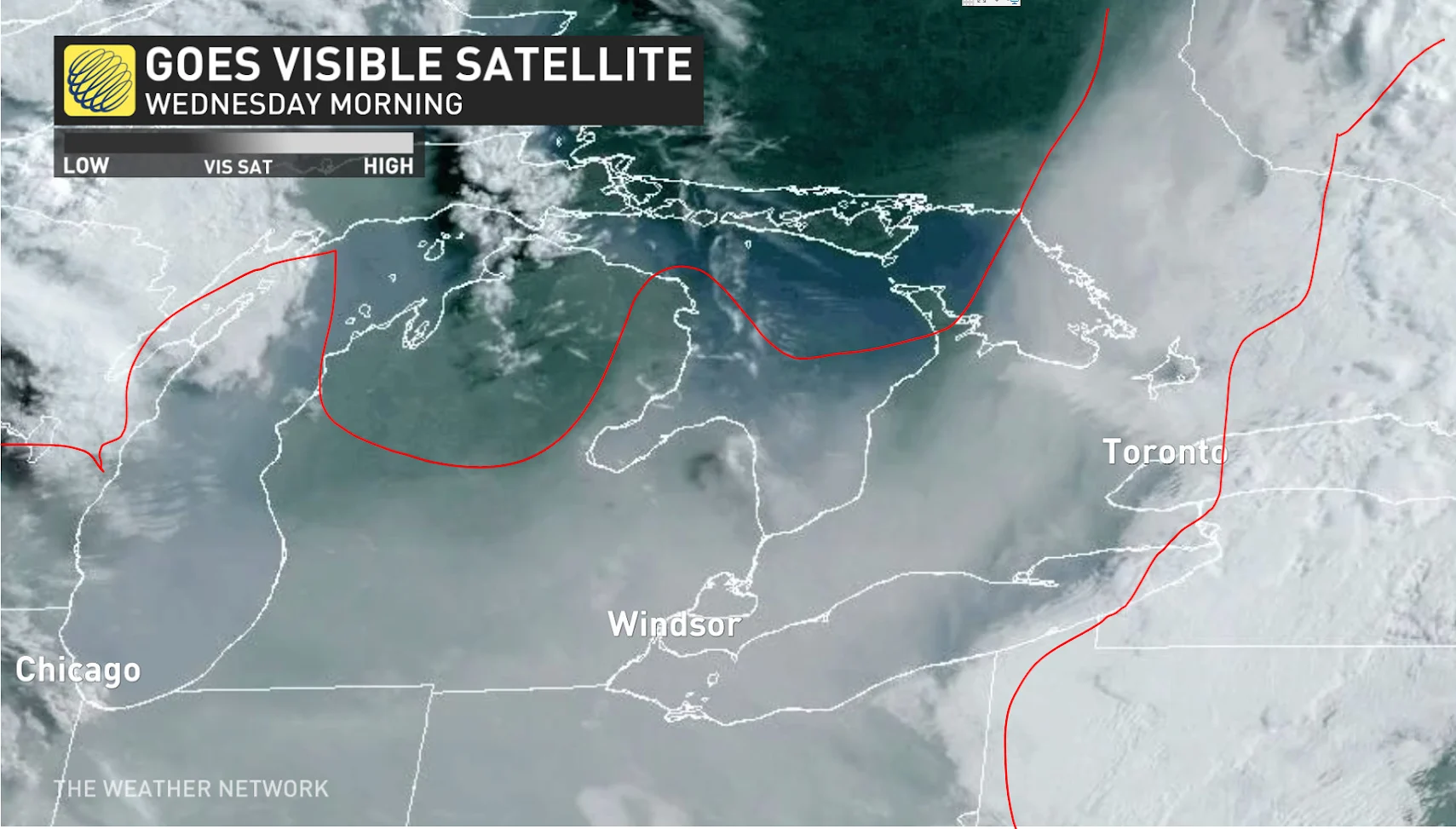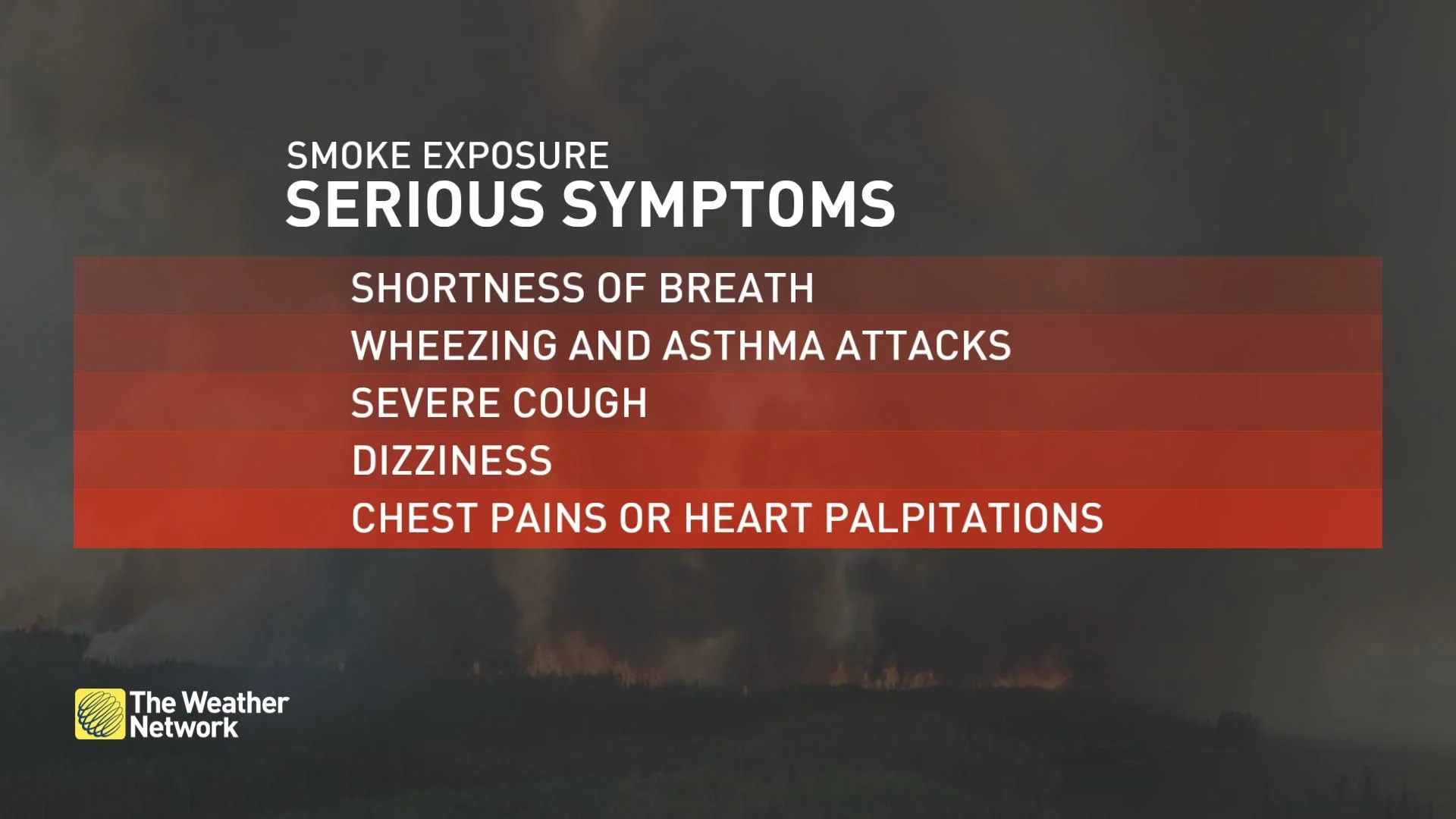
Smelling plastic? Millions are in the path of toxic smoke plumes
No, there isn’t a pile of tires on fire nearby; what you smell is smoke from the wildfires
Visit The Weather Network's wildfire hub to keep up with the latest on the active start to wildfire season across Canada.
You may have noticed by now that the smoke from this year’s fire season has been more dense and potent than previous years. Some people may have also noticed recently that the smoke has transitioned from a campfire-like smell to more of a burning plastic or rubbery smell.
Well, unfortunately, neither observations are just your imaginations. In fact, some locations in Ontario will be making the list of the worst air quality in the world in the coming days.
The wildfires in Canada this year, especially the fires in Quebec, have produced so much smoke that our overseas neighbours in Europe and neighbours to the south have also been experiencing our hazy skies.
ALSO READ: Best practices to keep yourself safe from wildfire smoke
Recently, many Ontarians have noted that the smoky skies are now coming with a burnt plastic smell rather than the classic smell of burning wood that we have become accustomed to over the last few weeks. With that, there’s good news and bad news. The good news is that there is in fact not a plastic fire burning anywhere, but the bad news is that there isn’t a plastic fire burning anywhere – meaning the wildfire smoke has been in the atmosphere for so long that chemistry is happening.

The power of the sun
Ultraviolet (UV) radiation from the Sun does more than just give us sunburns. It can interact with compounds already in the atmosphere to create new compounds. For example, ozone at the surface level (or smog as it’s commonly called) is caused by air pollutants such as NOx gases being broken up by UV radiation. The extra oxygen molecule then joins up with the free oxygen (O2) in the atmosphere to create ozone (O3). This is also why smog is most common in large urban populations just after rush hours on sunny days – the level of air pollution from vehicle exhaust is highest and the sun is out to facilitate the UV interaction.

Smoke from wildfires is composed of Volatile Organic Compounds (VOCs) that also, you guessed it, interacts with UV radiation. The VOC’s from the wildfire smoke interacts with the UV radiation to create benzene and formaldehyde compounds in the atmosphere. These are toxic air pollutants that can have very adverse effects on human and animal health – and they happen to smell like burning plastic.
RELATED: Toxicologist explains how wildfire smoke can harm human health
Smoky outlook
A slow-moving low-pressure system over Eastern Canada is pulling the large plumes of smoke from the wildfires in northern Quebec southward towards southern Ontario as the week continues. As the smoke descends over the densely populated region, perhaps the only exercise you should consider is that of caution.
It is important to adhere to Environment and Climate Change Canada’s air quality advisories during this time and limit outdoor exposure, especially if you are more vulnerable to the possible health implications.
The smoke will briefly clear overnight Wednesday, but move back in on Thursday over the Greater Toronto Area and surrounding cities.
WATCH: Special air quality statement for the GTA as wildfire smoke returns
Thumbnail image courtesy of Wendee Beach/Submitted.
With files from Anwar Knight.











